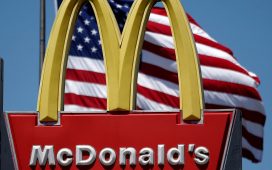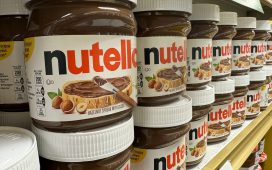Shares of Foot Locker fell in premarket trading Wednesday after the sneaker retailer reported a holiday-quarter loss, issued weak guidance for the current year and said it’s behind on meeting its financial goals.
Given how poorly its past fiscal year went, the company is now expecting the profitability goal it laid out during its March 2023 investor day to be delayed by two years, Foot Locker’s finance chief Mike Baughn said. It now expects to reach an EBIT margin of 8.5% to 9% by 2028, said Baughn.
Here’s how the company did in its fourth fiscal quarter, compared with estimates from analysts surveyed by LSEG, formerly known as Refinitiv:
- Earnings per share: 38 cents adjusted vs. 32 cents expected
- Revenue: $2.38 billion vs. $2.28 billion expected
The company swung to a loss in the three-month period that ended Feb. 3. Foot Locker lost $389 million, or $4.13 per share, compared with an income of $19 million, or 20 cents per share, a year earlier. Excluding one time items, Foot Locker reported earnings of 38 cents per share.
Sales rose slightly to $2.38 billion, up about 2% from $2.34 billion a year earlier.
In the current fiscal year, Foot Locker is expecting profits to be worse than analysts had expected. It anticipates adjusted earnings per share will be between $1.50 and $1.70, compared with estimates of $1.40 to $2.30, according to LSEG.
For fiscal 2024, Foot Locker is expecting sales to be between down 1% and up 1%, compared to estimates of down half a percent, according to LSEG.
CEO Mary Dillon said in a statement that Foot Locker managed to drive full-price sales “in addition to compelling promotions” during its holiday quarter. But the retailer’s gross margin fell by 3.5 percentage points “primarily as a result of higher markdowns.”
We “proactively reinvested in markdowns to end the year with leaner inventory levels compared to our expectations,” said Dillon. “As we continue evolving into a modern, omnichannel retailer for ‘all things sneakers,’ we are making important progress strengthening our brand partnerships, increasing customer engagement, transforming our real estate footprint, and driving growth in digital.”
Overall comparable sales decreased 0.7%, which is better than the 7.9% drop that analysts had expected, according to StreetAccount. Comparable sales at Foot Locker and Kids Foot Locker in North America increased 5.2%
It’s been a little over a year since CEO Mary Dillon took the helm of Foot Locker. During her tenure, sales have consistently fallen as the retailer grappled with a changing mix of sneaker brands and a target consumer that has felt the brunt of inflation more acutely than those in higher income brackets.
Foot Locker has also been repositioning its Champs Sports brand and has grappled with high inventory levels that, unlike its peers, it has struggled to curb. During the quarter, Foot Locker relied on markdowns to reduce inventory levels by 8.2% compared to the prior year.
In her past life as Ulta Beauty’s chief executive, Dillon skillfully won over buzzy beauty brands and turned the company into a powerhouse cosmetics retailer. When she took over as Foot Locker’s top boss in Sept. 2022, she was seen as the savior the legacy retailer sorely needed.
While Dillon inherited a slew of problems that existed long before she took over, and is still highly regarded across the retail industry, her turnaround of Foot Locker has come more slowly than some analysts had expected.
During its fiscal third quarter, Foot Locker eked out surprise beats on the top and bottom lines. Dillon told investors the company was making progress with its turnaround initiatives. The company inked a new marketing deal with the NBA, made plans to enter India and said the holiday quarter was off to a strong start.
Dillon has also worked to revamp Foot Locker’s store footprint. Many of the retailer’s stores are in underperforming malls, and Dillon wants the company to focus on more experiential stores that are better suited for the communities they operate in. During the fourth quarter, Foot Locker opened 29 new stores, remodeled or relocated 66 locations, and closed 113 stores.
Last March, Dillon touted a renewed and revitalized relationship with Nike, which has long been the largest driver of Foot Locker’s sales. She has also sought to reduce the company’s reliance on the sneaker giant as it has focused on driving direct sales and squeezing out wholesalers.
The relationship between the two brands still appears to be in a state of flux. On earnings calls, Nike routinely points to Dick’s Sporting Goods and JD Finish Line as its treasured wholesale partners.
But in mid-February, Foot Locker announced a new partnership with its longtime supplier. The partnership, dubbed The Clinic, brings together Foot Locker, Nike and Jordan Brand, and will feature “interactive activations, high reach media, real life basketball clinics, social media content, community events and more.”
The partnership officially launched during the 2024 NBA All-Star Game in Indianapolis, In.
Read the full earnings release here.









